We’re excited to bring you a roundup of May 2021 fantasy book releases by and about women and nonbinary folk. Let us know what you’re looking forward to, or any titles that we’ve missed, in the comments!
Archive for 2021


Joamette’s Recommended Readings
Sirens Studio Guest of Honor Joamette Gil shares a list of fantasy and other works that she loves. If you enjoy her work, we encourage you to check out these other reads, spanning graphic, short fiction, and novels. Take it away, Joamette!
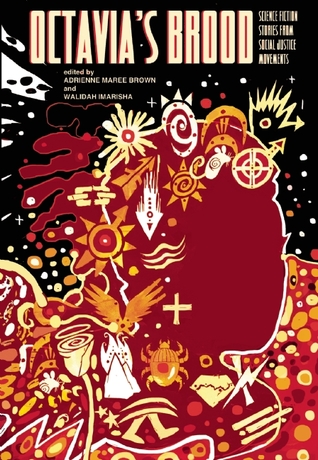
Octavia’s Brood: Science Fiction Stories from Social Justice Movements edited by Adrienne Maree Brown and Walidah Imarisha
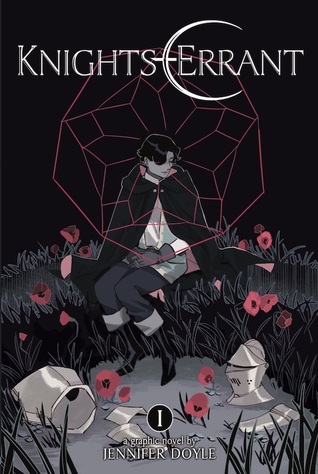
Knights-Errant by Jennifer Doyle
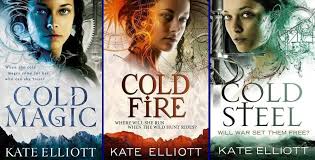
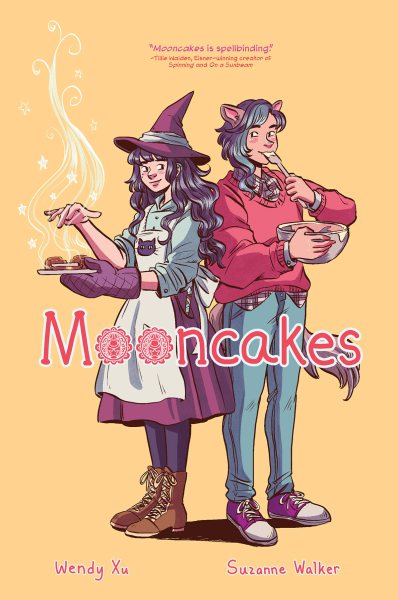
Mooncakes by Suzanne Walker and Wendy Xu
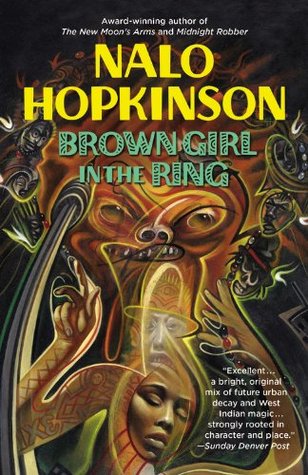
Brown Girl in the Ring by Nalo Hopkinson
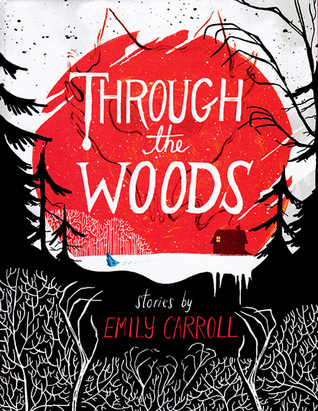
Through the Woods by Emily Carroll
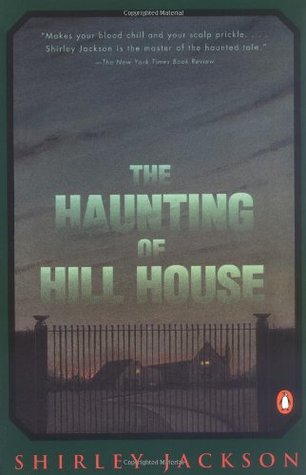
The Haunting of Hill House by Shirley Jackson
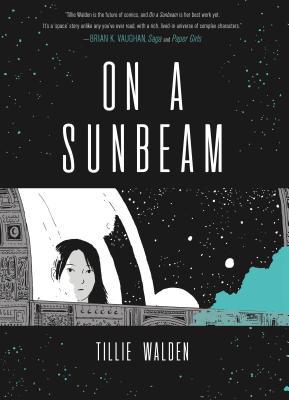
On a Sunbeam by Tillie Walden
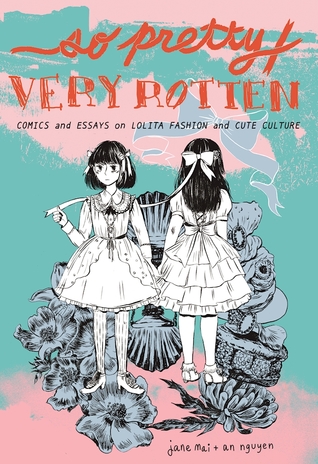
So Pretty/Very Rotten: Comics and Essays on Lolita Fashion and Cute Culture by Jane Mai and An Nguyen
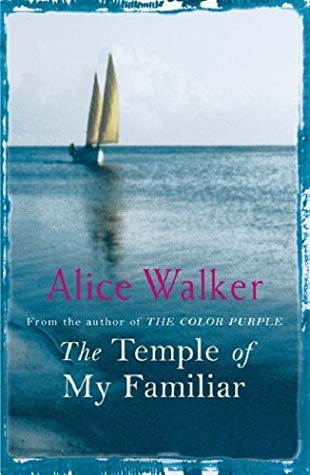
The Temple of My Familiar by Alice Walker
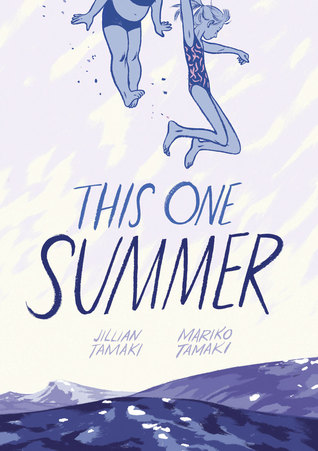
This One Summer by Mariko Tamaki and Jillian Tamaki
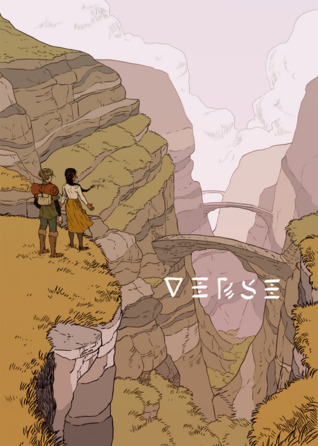
Verse by Sam Beck
Joamette Gil is the head witch at P&M Press, an independent comics micro-press specializing in speculative fiction by creators of color, LGBTQIA creators, and creators at the intersections. Best known for her Prism Award-winning publication Power & Magic: The Queer Witch Comics Anthology, she also made the James Tiptree, Jr. Literary Award’s 2018 Honor List and received nods from the Ignatz Awards and Lambda Literary Awards over the course of P&M Press’s three-year existence. Her newest titles are Heartwood: Non-binary Tales of Sylvan Fantasy and Power & Magic: Immortal Souls. Another new title, Mañana: Latinx Comics from the 25th Century, is forthcoming in 2020. Joamette’s own comics work has been featured by IDW, Margins Publishing, EverydayFeminism.com, TheNib.com, Oni Press, Lion Forge, and Abrams ComicArts. She also contributed to the Eisner Award-winning Puerto Rico Strong anthology benefitting hurricane disaster relief on the island. When she’s not inhaling graphic novels, she’s off plotting silly play-by-post scenarios or watching horror movies with her friends and familiars in Portland, Oregon.
For more information about Joamette, please visit her website or her Twitter.

Heartwood: Non-Binary Tales of Sylvan Fantasy edited by Joamette Gil
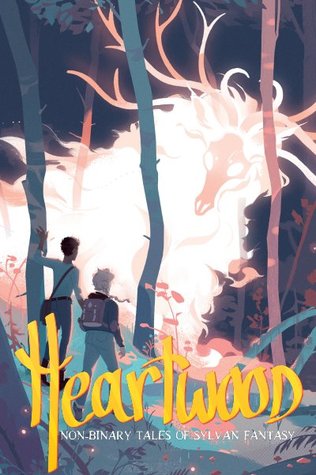
Into the woods
Without regret,
The choice is made,
The task is set.
Into the woods,
But not forget-
Ting why I’m on the journey.
Into the woods
to get my wish,
I don’t care how,
The time is now.
– “Into the Woods,” lyrics by Stephen Sondheim
Not being a noted fan of fairy tales, and not having participated in the Kickstarter for Heartwood: Non-binary Tales of Sylvan Fantasy, edited by Joamette Gil, it took me a rather embarrassingly long time to work out why the comics in this anthology by non-binary creators all centered on the woods. The woods have been a space of transformation and potential in stories for centuries, as the Sondheim lyrics that I couldn’t stop thinking of while reading this book indicate. This collection, which is delightful overall, extends that potential to the creators it includes and to the characters in its stories, many of whom are non-binary themselves.
“Sylvan fantasy” is a broad category, and the stories in Heartwood vary from contemporary settings, like the opening “The Biggest Dog You’ve Ever Seen” by Z. Akhmetova, to fully secondary world settings, like “New Leaves” by Emily Madly and Maria Li. Most treat the idea of the forest as literal, but in at least one comic, Rhiannon Rasmussen and Chan Chau’s “Dive,” the forest is either metaphorical or a forest of seaweed. (Partly because it played with the concept, that one was one of my favorites.) “Finding Alex,” by editor Joamette Gil and Corey Ranson, takes the brief for the collection very literally indeed—and the story, in which the main character asserts their non-binary identity through a strange encounter in the woods, works beautifully.
One of the standout entries in the collection, “Shuvah (Return)” by Ezra Rose and Jey Barnes, gives that same plot a very specifically Jewish twist, as the protagonist returns to the woods to find the same forest beings with whom they celebrated Sukkot as a young Orthodox child, and celebrates Tu B’Shevat with them as a non-binary adult.
Indeed, one of the strengths of this collection is its showcasing non-binary protagonists in a variety of ways—whether in stories revolving around their being non-binary, or stories in which they have adventures like any other fantasy protagonist.
Having both together elevates Heartwood out of the potential danger zone of being a gimmick to being a fun, relevant comics anthology with a lot of heart.
Heartwood is a beautiful book, particularly its gilt-edge pages and foil lettering on its gorgeous cover, but the black and white printing unfortunately does render some of the comics hard to distinguish at times—I suspect some if not most of the submissions were originally full color. Those comics like “Dive” which were clearly conceptualized for monochrome printing stand out for their crisp lines and clearly differentiated tones. In terms of art style, most of the comics in the collection are on the more conventional end of the gamut of comics art; the more schematic, “Hyperbole and a Half”-esque art of Polly Guo’s “Paloma” is probably the most different from the rest. But even though the anthology includes twenty-two stories, none of them feel rushed, and none of them are obviously less technically accomplished than any of the others. These creators know their stuff, and it shows.
All in all, Heartwood is a strong entry from Power & Magic Press, living up to its stated mission of showcasing the talents of non-binary comics creators and the press’s mission of providing a home for thoughtful genre content by queer creators and creators of color. If you haven’t had much experience with the current flowering of indie comics, Heartwood is a great place to start. I’ll definitely be looking forward to future anthologies from Gil and P&M Press.
Dr. Andrea Horbinski holds a PhD in modern Japanese history with a designated emphasis in new media from the University of California, Berkeley. Her book manuscript, “Manga’s Global Century,” is a history of Japanese comics from 1905–1989. She has discussed anime, manga, fandom, and Japanese history at conventions and conferences on five continents, and her articles have appeared in Transformative Works and Cultures, Internet Histories, Convergence, and Mechademia.

Further Reading: Joamette Gil
Have you already loved publisher and comics-creator Joamette Gil’s work with Power & Magic Press? The 2017 Prism-award winning, Ignatz-nominated Queer Witches Comics Anthology? Heartwood: Non-binary Tales of Sylvan Fantasy? Haven’t read those yet but interested in finding out more about Joamette and her work? As part of Joamette’s Guest of Honor week, we’re pleased to compile some of her interviews and comics from around the web.
Joamette’s interviews:
-
Vision 2020: Joamette Gil (2020): “As an introverted, low-income immigrant kid, escapism was my thing, and my favorite way to escape was watching Sailor Moon. The way she made me feel convinced me that, when I grew up, I wanted to make others feel the same way using characters of my own.”
-
Indie Comics Spotlight: Joamette Gil Channels Power & Magic in Her Comics (2019): “So often, a “witch” was any woman embracing her authentic self, rejecting social obligations. I relate to that as a queer woman of color who always had to hear that there was “something wrong” with me, for no other reason than that I didn’t fit a certain “womanly” ideal.”
-
Smash Pages Q&A: Joamette Gil on ‘Heartwood’ and More (2018): “In a lot of ways, Heartwood was also about pushing P&M Press’ boundaries: how many people can we hire, how much can we pay them, how many invites vs open submissions, how many people can I edit at a time, how well will this fund? The hypotheses across the board were ‘more, bigger,’ and I was mercifully right, hah. I eventually want to publish books by individual creators, so in addition to shining more light on less represented voices, every anthology is a chance to grow into a publisher that can do a solo creator justice.”
-
Joamette Gil Summons ‘Power & Magic’ for Queer Witches Everywhere (2016): “My ‘thing’ has always been telling stories that resonate with people from marginalized communities, especially queer people of color who grew up (or currently live) in poverty, which is my own experience. Power & Magic exists because I don’t just want to resonate; I want to be materially supportive to others like me.”
Joamette’s comics:
- “Hungry” (2019): Joamette’s contribution to the Power & Magic: Immortal Souls anthology.
-
“As the Roots Undo” (2017): Joamette’s contribution to Power & Magic Press’s Queer Witches Comics Anthology
-
What White Americans Misunderstand About Mixed-Race Latinx Identity (2017): “Visibly mixed-race people are the norm, but Latinx people are trained to identify with nation first and race second, if at all.”
-
Four Major Ways to Cope with Social Anxiety (2016): “I’ve been struggling with disruptive social anxiety and panic for at least 12 years now. These are the coping skills that have withstood the test of time for me.”
-
Four Unique Struggles That Queer and Trans People of Color Have to Deal With (2016): “[W]hen LGBTQI* identities intersect with POC identities, the experience and struggles will be different from those of folks who only live on one of those streets.”
-
Five Radical Ways People Do Non-Monogamy That You Need to Know About (2015): “[H]ere are five styles of non-monogamy with feminist principles at their core that the mainstream either ignores or doesn’t take seriously.”

Power & Magic is a queer witch comics anthology full of variety and heart
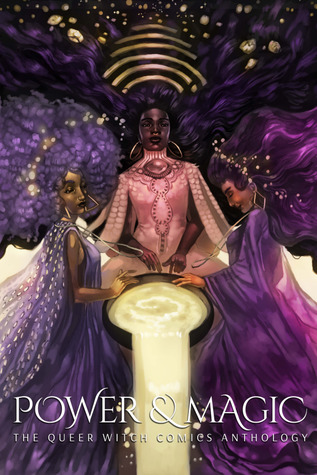
Power & Magic: The Queer Witch Comics Anthology is edited by Joamette Gil, and showcases seventeen creators of color in fifteen unique stories. Each one interprets “witch” differently, but all feature people of color and queerness in a beautiful way. As with any collection of works, there is a wide range of styles and tones; while I felt some stories were stronger than others, overall it is a lovely book. On a side note, I appreciate that the table of contents includes content warnings for particular stories. It’s a thoughtful detail that I wish more publishers would use.
The anthology opens with Jemma Salume’s elegant four-pager which, despite its brevity, is a gorgeous and intriguing gem that brilliantly sets the stage for the rest of the stories. For me, standouts include Nivedita Sekar’s modern take on fairy tales; drawn in delicate pencil, it is a quiet meditation on heartbreak, dating, and growth. Another highlight is Ann Xu’s exploration of generational magic, where the loss of one’s own language will be familiar to many children of diaspora. Her expressive brushstrokes flow through the pages, leading to a poignant triumph. I also loved Aatmaja Pandya’s piece; her deceptively simple art carries her mostly wordless story, a tender look at old age and death. Finally, the last story, by Naomi Franquiz, starts from a painful place, but the evocative art and lyrical writing come together for a hopeful journey of healing through community.
Gil’s own story is a short but compelling examination of tradition. She subverts the usual dichotomy of light equals good and dark equals bad, an especially effective choice given the Black characters in her piece. Gil’s dreamy art compliments her tale of self-discovery and love, and while it might not be the flashiest story in the book, it feels like the core of what Power & Magic is all about.
On a technical note, the book is in grayscale, and a couple of the comics don’t have quite enough visual contrast, making them somewhat hard to read. (Possibly the digital version of the book might have fared better than the print edition in this regard.) The text also varies from fonts to hand lettering, and some readers might struggle when the text is smaller or less clear.
Gil has put together a solid collection with lots of variety and plenty of heart. If you enjoy other queer and/or POC focused anthologies of fantastical comics, like the Beyond or Elements series, Power & Magic casts a similar spell.
Lani Goto grew up on a steady diet of fantasy books, but now it’s more like a mix of some fantasy, lots of sci-fi, and a bit of horror. In addition to reading, they enjoy cooking, hanging out with animals, and yelling at movies. They have a degree in art, and another in comics, though they currently work with engineering teams at the Wikimedia Foundation.

Joamette Gil: Exclusive Interview
FAYE BI: You introduce yourself on your website as a “queer Afro-Cuban cartoonist and publisher from the Miami diaspora.” To me, each descriptor feels intentional and integral to your identity as creator and business professional. Can you tell us a little bit about your background and what inspired you to start making—and publishing—comics? In what ways do these descriptors affect, or not affect, your work?

JOAMETTE GIL: As a creator, I’m primarily socially motivated: I want to be seen, I want others to see themselves, and I want my work to benefit the world. I publicly list my politicized and cultural identities because I want to be found by anyone who might be looking for me (or looking for themselves in me).
These descriptors affect every part of my life from top to bottom, my work especially, in that they inform my experiences and values. Everything I write or publish must fulfill a desire born when I was twelve years old, watching Sailor Moon on stolen cable: “I want to spend my life making people feel the way this makes me feel.” What I felt then was wonder, passion, and catharsis.
I grew up in poverty in Miami, Florida, where being a member of the politically dominant Cuban majority there offers about as little benefit to Afro-Cubans (like my mother) as being American offers African-Americans. Social programs and ingenuity-born-of-necessity kept us as housed, clothed, fed, and healthy as they could. I excelled at school, taking on more and more advanced programs through adolescence, while playing surrogate mother to my siblings when caregiving with untreated mental illnesses became too much for my mother and stepfather. Anxiety, isolation, scarcity, constant problem-solving, avoidance of my own emotions: these are why I ultimately left for the opposite coast as soon as I was eighteen.
Through it all, to this day, cartoons were there to soothe me and help me dream. I love comics, in particular, as the most universal of the storytelling forms. It can be created, read, and shared across language barriers, even sans the ability to read or write words. I use the medium to express everything I did not formerly have the luxury nor space to express, and to empower others to have their own voices heard in an industry that struggles to compensate anyone well, let alone marginalized creators breaking barriers with their stories.
FAYE: You are a one-human operation at P&M Press, the publisher of Power & Magic: The Queer Witch Comics Anthology and Heartwood: Non-binary Tales of Sylvan Fantasy. You recently finished funding the Power & Magic: Immortal Souls (volume two) on Kickstarter. Was your plan always to start your publishing journey on their platform as opposed to traditional publishing, and what is it like working with their publishing team? What has been surprising about the process when it comes to the curation, production, and fulfillment? And can I please geek out about the beautiful foil and gilded edges on Heartwood?
JOAMETTE: Yes, Kickstarter was always the idea. (And please do—I’m still geeking out about Heartwood’s production values myself!) Even prior to 2016 (when P&M Press was born), comics were very much a DIY space in my mind. Some of my first interactions with comics were online, during the 2000s era of webcomics, when people were figuring out monetization of works without publishing deals. I was probably part of the first generation of creators who would see self-publishing as the dream, not an alternative or a consolation route or a daring experiment. By the time I was in college, C. Spike Trotman was planting the seeds for Iron Circus Comics, the first (and to my knowledge, still only) comics publisher with mainstream, international distribution that started on Kickstarter. By the time I found my way to publishing others, revolutions in what was possible in comics had been fought and won ahead of me, creating a clear, new path.
As far as surprises, every campaign presents a new one! These are the sorts of things you don’t read about if you Google “how to run a Kickstarter campaign,” such as how Kickstarter earnings impact your eligibility for social programs, the various life scenarios that could lead to a fluctuating creator line-up throughout production, and just how many packages are “too many” to take to a post office on a single day.
FAYE: In both “As the Roots Undo” (your story in Power & Magic) and “Finding Alex” (your story in Heartwood), the forest is a place of growth, self-discovery and transformation. What draws you to these fairytale motifs and inspires you to keep returning? I noticed you are based in Portland, Oregon, home of many beautiful forests—do you have any favorite sylvan spots?
JOAMETTE: I’m drawn to the forest as a setting for its intercultural significance as a liminal space. While a false dichotomy, we do tend to draw a line between the places where people live and conduct their business and the places that are meant to be visited, then swiftly exited, for fear of what we could lose if we stay there too long. Forests, the sea, outer space, the bush—these places force us out of our comfort zones. Whenever I’m in the woods, I feel that discomfort, that loss of footing, and it makes me starkly aware of my own body. My thoughts become sharper, my breath calmer. My early life was the opposite of rosy, so the prospect of a place between here and there, where anything is possible, where nothing is written, where “becoming” awaits, is my favorite idea to consider!
For sylvan spots, the witch’s burned-out castle in Forest Park is one of my favorites. It’s exactly what it sounds like.
FAYE: In your portfolio’s Lettering section, you share that lettering is only second to your love of storytelling: “The marriage between text, balloons, and illustrations can make, break, or even elevate a comics work.” I often feel that when lettering is good, it’s viewed as almost invisible and so obvious, like the reader can’t imagine this layout or placement any other way, allowing the work to shine for itself—though of course, it’s only because it’s good that it’s unnoticeable. Can you tell us more about your lettering and share some instances (of your own work or work you admire) where the lettering matches the art and text perfectly?
JOAMETTE: I would say good lettering is either seamless and invisible, or seamless and load-bearing. “Seamless” is the common quality, like you said about not being able to imagine the letters any other way. I would describe my lettering for Jamila Rowser and Sabii Borno’s Wobbledy 3000 as “invisible”: the balloons are colored in the same distinctive pastels as the artwork, and the typeface balances legibility with a swirly quality that echoes Borno’s line work. Meanwhile, I would describe the lettering in something like Emily Carroll’s Through the Woods collection as “load-bearing” because the letters fundamentally inform the story being told. It can’t stand without them, and it isn’t meant to. Her particular horror tone would shift dramatically if she’d chosen to render the text on the page in any other manner than the one she chose: handwriting that is subtly stilted and scratchy, like a journal scrawling, placed directly onto the artwork without caption boxes. The text size fluctuates based on the height of emotion called for in each moment, and the odd white dialog balloon is lopsided, frayed, or even melting.
FAYE: In a previous interview, you’ve discussed sourcing creators for both of your anthologies and building a network through social media, acquaintances, and databases like the Queer Cartoonists Database. Both collections have such a rich range of art styles and stories, ranging from heartwarming to devastating, philosophical to visceral, and beyond. Since many of these artists are underrepresented in mainstream comics in various ways, how has it been to work directly with so many of them? What is the next step for you in expanding this amazing community you’ve built?
JOAMETTE: In short, a dream! I want nothing more than to connect with people, and creativity is the way I do that best. It’s been my privilege to work with over 100 creators from all over the world, of every race and countless ethnicities, most of them queer women and non-binary people, since 2016. Their talents, skills, and passions continually humble me, and there’s a bittersweetness in witnessing firsthand just how much our marginalized communities have to offer (because so little of it is ever validated by mainstream access). To date, we’ve centered our books around queer women of color and non-binary people overall, and our forthcoming book centers Latinx creators of all genders and backgrounds. My hope is to continue expanding P&M Press until we can properly compensate solo creators for original graphic novels, creating space for more in-depth expressions by the people we publish.
FAYE: Sirens is about discussing and deconstructing both gender and fantasy literature. Would you please tell us about a woman or nonbinary person—a family member, a friend, a reader, an author, an editor, a character, anyone—who has changed your life?
JOAMETTE: That would have to be my best friend, who shall remain nameless for their own privacy, haha! My best friend is an AMAB non-binary trans fem who’s been in my life for over a decade. She was my primary support during my own coming out at as queer and as a non-binary woman. She’s someone who I’ve known long enough to see struggle, fail, grow, succeed, and come into her own—and vice versa. Our twenties would have been much harder without one another to call queer family.
Joamette Gil is the head witch at P&M Press, an independent comics micro-press specializing in speculative fiction by creators of color, LGBTQIA creators, and creators at the intersections. Best known for her Prism Award-winning publication Power & Magic: The Queer Witch Comics Anthology, she also made the James Tiptree, Jr. Literary Award’s 2018 Honor List and received nods from the Ignatz Awards and Lambda Literary Awards over the course of P&M Press’s three-year existence. Her newest titles are Heartwood: Non-binary Tales of Sylvan Fantasy and Power & Magic: Immortal Souls. Another new title, Mañana: Latinx Comics from the 25th Century, is forthcoming in 2020. Joamette’s own comics work has been featured by IDW, Margins Publishing, EverydayFeminism.com, TheNib.com, Oni Press, Lion Forge, and Abrams ComicArts. She also contributed to the Eisner Award-winning Puerto Rico Strong anthology benefitting hurricane disaster relief on the island. When she’s not inhaling graphic novels, she’s off plotting silly play-by-post scenarios or watching horror movies with her friends and familiars in Portland, Oregon.
For more information about Joamette, please visit her website or her Twitter.

Sirens-inspired school curriculum with books students actually want to read
As a high school Language Arts teacher, one of the more difficult aspects of my job is finding books for my students to read that are high interest, manageable, and have material that is teachable. Teachable, for me, means it presents opportunities for discussion about characters and their choices or how they fit or don’t fit into their world, and why or how this reflects the world we live in now—what can we learn from this book? Young adult fantasy literature can do this! The books on this list will bring profound discussion and teachable moments that teens are quite capable of engaging with.
All books have the necessary literary elements that teachers and students are beaten over the head with thanks to the Common Core and standardized testing. The average high school student does not need to be reading classics from fifty-some years ago that weren’t written for them. If we expect students to become lifelong readers, it’s vital they be given choice and be provided with opportunities to read broadly and outside of the very cis, very white, very male literary canon. So, I propose new options that are incredibly teachable and will leave your students engaged and wanting more.
Scavenge the Stars by Tara Sim: The Count of Monte Cristo, but better. If your administrators are demanding you teach the classics, slip this one into the mix. You could even watch the film of The Count and have students compare the two stories. Sim’s version gives you all the literary elements you could ask for, it’s a million pages shorter, and Amaya and Cayo are teens. Spoiler alert: teens love reading about teens!
A Blade So Black by L.L. McKinney: This is the version of Alice’s Adventures in Wonderland that we don’t deserve. Not only can you compare it with the original text or any of the many movie adaptations, you can do a neat activity with the poem “Jabberwocky” and students will be making connections and engaging left and right. This book has so many teachable moments in it. Students will relate with Alice as she struggles to not only be a hero but maintain passing grades.
The Ship Beyond Time by Heidi Heilig: Time. Traveling. Pirates. This great story not only provides an avenue to discussion of not getting bogged down in the past, but deals with the history of Hawaii, which is super fascinating and not something that is widely covered in most history books. So, lots of opportunities for additional research students can do on their own to enhance learning. They can make presentations and talk about the different cultures in the books, all while discussing the moral complexities of whether or not we should be able to alter any given timeline.
Pet by Akwaeke Emezi: WOW. This book is everything you need. If you could get away with just studying one book for the entire year, this would be the one. Personally, I see books as a way to help students develop empathy and a sense of how much of the world they don’t yet know about. Pet deals with an adolescent who thinks the world is pretty perfect, but she’s about to find out that even in a perfect world, monsters still exist. Pet deals with current issues so deftly and can open the door to great moments of student insight.
Aru-Shah and the End of Time by Roshani Chokshi: This fantastic adventure features Aru having to navigate not only the perils of adolescents and middle school, but she’s also the daughter of a god and has to save the world. Like the others, this fantasy features a protagonist trying to figure out her place in a rapidly changing world. It offers discussion topics such as what is true bravery and what makes someone a friend—both excellent topics for students to discuss and write about. You also get to explore the legend of the Pandava brothers and aspects of Hinduism—things often not discussed in American classrooms, which can lead to lots of enhanced learning opportunities for students as they learn more about the rich and diverse world around them.
The Gauntlet by Karuna Riazi: The best version of Jumanji ever made. After Farah is sucked into a dangerous and deadly board game, she must puzzle out the mystery to save her friends and escape. This book will not only drive great conversations about bravery and friendship, but you get to delve into Middle Eastern culture as well.
This Savage Song by Victoria Schwab. This book destroyed me in the most delicious way possible and it will leave your students desperate to read the sequel (you could even teach it!). August and Kate are at war. One is a monster who wants to be human and the other is a human who wants to be a monster. This book will lead to discussions about what it means to be human and what the worst kinds of monsters are as well as what does or doesn’t make a monster.
Dread Nation by Justina Ireland: What if the Civil War created zombies? If you want to know, read this book to find out! Dread Nation follows the story of a young Black woman trained to kill zombies. This book touches on so many social justice issues and opens the doors for the uncomfortable conversations about race and privilege that we need to be having with teens. I promise you’ll have content to teach for class after class.
The Fever King by Victoria Lee: This. Novel. Put this masterpiece in the hands of high school students and let them debate Noam’s strategy for taking down a corrupt government while its citizens are dying from a magical virus. There is so much to unpack in this novel and believe me, teenagers are ready for it.
The sky’s the limit with books that can be introduced into the classroom. But the bottom line is that today’s students deserve to be offered reading choice and be presented with books that are written for them. Books that present a diverse and inclusive world. Books that bring hope and magic into their lives. Representation matters—and the more we embrace it in the classroom, the better our world will be.
Katie Passerotti is a writer, teacher, and fangirl. She is obsessed with villains and will probably assist one in taking over the world. When she’s not making diabolical plans, she and her wolfhound are off exploring forests and parks or she’s reading stories about fierce, fantastical girls. Follow her on Twitter @KatjaBookDragon

2021 Book Club: Our May pick is Maybe a Fox
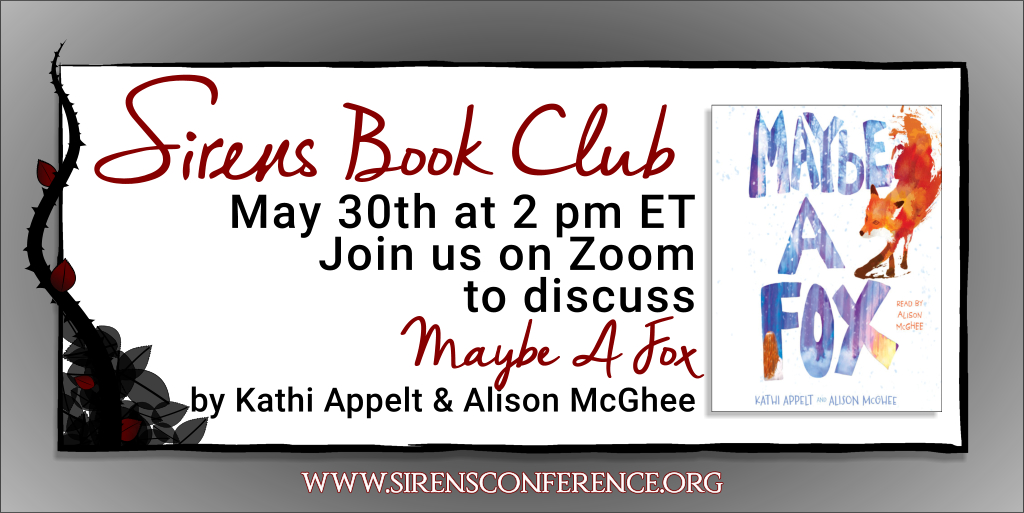
The Sirens Book Club meets monthly to discuss a book from our 2021 Reading Challenge, which includes 50 works by women, trans, and nonbinary authors that imagine a more inclusive, more empathetic, more just world.
In May, we’re reading Kathi Appelt and Allison McGhee’s stunning novel for young readers, Maybe a Fox. Jules and Sylvie are sisters and, even better, best friends. But when their mother passes away, they each deal with their grief a little bit differently—Jules hunkering down, Sylvie running away. One morning, when Sylvie races to throw one more wish rock in the river before school, she disappears; at the same time, a fox is born, one that seems destined to protect Jules as she searches with an ever-thinning thread of hope for her missing sister. Maybe a Fox is a delicate reflection on what it means to grieve and, ultimately, what it means to find hope again.
The next book club will be on Sunday, May 30 at 12:00 p.m. Mountain time (2:00 p.m. Eastern) over Zoom. If you’d like to join us, please email us at (help AT sirensconference.org) to be added to our list; for safety and security reasons, we’ll be emailing the link out to interested folks closer to the discussion date.
We hope to see you there.


2021 Programming: Roundtable Discussions
At Sirens, programming means the dozens of hours of papers, lectures, panels, roundtable discussions, workshops, and afternoon classes that make up the heart of Sirens. In our 2021 programming series, we’re doing a deeper dive on each presentation format; this information will both help potential presenters select the proper format for their concept and provide details on proposal requirements. We also suggest that potential presenters read how Sirens programming works and our tips, tricks, and frequently asked questions. Previously, we’ve taken a deep dive into papers and lectures, panels, and workshops/afternoon classes. You can submit a proposal any time until May 15.
Sirens roundtable discussions are moderator-led conversations which usually have a participating audience of roughly 25 people. In 2021, that number may be smaller due to pandemic restrictions. These presentations approximate college discussion sections, and because of this format, they are best suited to topics where everyone in the audience is likely to have something to contribute. A discussion of the merits of various social media platforms for reading groups, a dialogue about effectively retold fairy tales, or a conversation about ideal books for introducing new readers to the fantasy genre could all be excellent roundtable topics.
Roundtable moderators lead the discussions through a series of questions and are responsible both for facilitating the conversation and keeping the audience on track. Moderators who wish to tackle an esoteric topic or convey their research, analysis, or viewpoint should strongly consider presenting a paper or lecture where their knowledge can shine, instead of a roundtable discussion—here, it’s essential that the audience not need an introduction to the topic.
Roundtable discussions may have only one presenter. Since the moderator is the facilitator in a roundtable discussion, we limit this presentation format to only one presenter.
Roundtables are always 50 minutes long. Presenters should plan enough questions to fill the entire time. As audience participation is the heart of this presentation format, presenters need not save time specifically for audience questions. Usually, ten solid questions and follow-ups will be more than enough for a 50-minute discussion.
Proposal requirements include a presenter biography (50–100 words), a presentation summary (50–100 words), and a detailed abstract (300–500 words). We will publish the biography and the summary on our website and in our program book to help attendees navigate our programming and decide which presentations they’d like to attend. The abstract is for the vetting board. It should explain your topic and approach to the vetting board and be far more in depth than your summary. Roundtable abstracts may be in the form of a series of at least ten questions (with appropriate follow-up questions), rather than a more traditional paragraph format, if the presenter prefers.
Room set-up includes tables and chairs arranged in a square or U-shape. As the rooms hosting roundtables are small, no audio-visual equipment will be provided. However, a small white board and an easel will be available.
Looking for conference programming help or inspiration?
- Free Topics: This spring, we’ll be tweeting programming topics that are free for you to take, develop, and use in your programming proposal. You might take them as is, you might use them as inspiration, or you might find that they get your brain moving! Follow us on Twitter @sirens_con or check out #SirensBrainstorm.
- More Questions: Email us! You can contact our programming team at (programming at sirensconference.org).
Examples of summaries of past roundtable discussions from Sirens:
- Can You Go Home Again?: Fantasy, Re-Reading, Childhood Favorites, and Nostalgia by Faye Bi: This roundtable will explore the transformative joy of re-reading an old favorite, as well as the flip side of discovering that a beloved book is no longer a favorite. With influence from Jo Walton’s and Laura Miller’s ideas on re-reading, we’ll delve into the books read long ago and see how time, successive reads, and reading companions change our relationships with them.
- Female Game-Changers by Sherwood Smith: Let’s talk about heroines as catalysts in revolutions. Not all heroines are battle commanders, though we can take time to appreciate the ones who are. Many begin with little besides their wits and skills. Some have special gifts, some do not. Some are born to rank, others are outsiders in various ways. In this roundtable discussion, we will talk about the different ways heroines in genre literature bring about change.
- Obligatory Horrors by Jen Michaels: Daughter, sister, girlfriend, mother, wife, companion, princess–murderer. Fairy tale stories have always had a dark side, but in a number of new story collections, such as Angela Slatter’s A Feast of Sorrows: Stories and Daniel Mallory Ortberg’s The Merry Spinster, a repeated commonality between protagonists in roles traditionally held by women in fairy tales is how choices and circumstances lead them to murder. In this roundtable discussion, we will examine how societal expectations and obligations are the true horrors in many of these stories and how the authors enable us to root for those who might have been portrayed as villains in traditional fairy tales.
- Reinventing the Literary Canon—Why Don’t We Teach That? by Katie Passerotti: In high school English classes, students are required to read books considered classics within the literary canon. With few exceptions, these books are written by white, cis-het men. The adherence to this list is stifling today’s students. The world is changing, and the current educational system no longer meets the needs of its students. This discussion will examine how the needs of students are evolving, what the purpose of English classes should be going forward, and ways to expand the curriculum to include more diverse books that better represent not only the student population, but the world students live in.
- The Socioeconomics of Magic: Correlations Between Class Structure and Use of Magic in Fantasy Narratives by Emma Whitney: In the struggle for power that constitutes the plot of many fantasy novels, magic is often the primary tool. This use of magic generally confers a particular social status to the user. Frequently, especially in classic “epic” fantasy, this is an elevated status, but that is not always the case. In this roundtable we will discuss how magic is used to reinforce or break down social structure, and what this might say about how we view class distinctions.
- There’s No I in Hero: A Discussion of Communities as Agents of Change by Jennifer Shimada: One of the most pervasive American myths is the idea of “rugged individualism”–that individual heroes can save the world or push their society toward progress. However, real, lasting change never comes from a single hero fighting on their own, or even from a small band of heroes working together. Real progress and change comes from movements and communities, with many people working together and separately over a long period of time. In this roundtable, we’ll discuss the problems with depending on individual heroes to save the day, and the ways in which fantasy stories can center movements and communities instead.
For more examples of past programming, visit our archive.






















































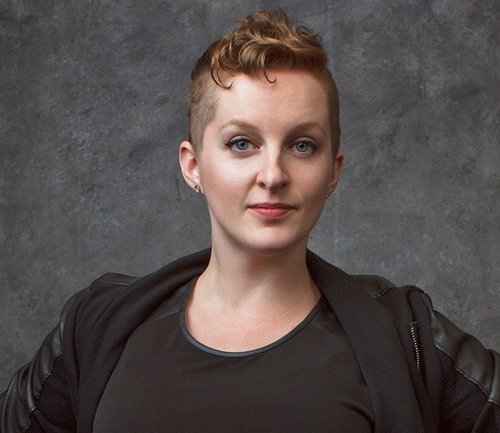
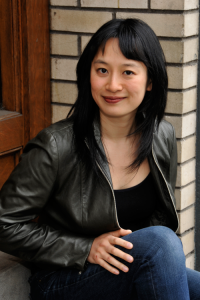




Connect with the Sirens community
Sign up for the Sirens newsletter